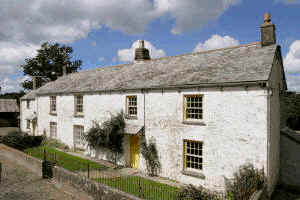 Did you hear the great Matthew Fort blot his copybook last week on Radio 4? He was developing the theme he had originally created in the Waitrose Food Illustrated after being forced to continue the debate in the Guardian following an outraged response from Aga owners. Bantering with John Humphrys, James Naughtie (clearly a closet Aga devotee) and Amy Willcock, apparently called the Queen of the Aga (listen to it here - 8.50am slot) he obviously thought it useless at cooking without really having any experience of it. Amy did a fairly pathetic job of standing up for the great beast in the kitchen - her crown needs handing over to someone who is a far better exponent and I'd like to make a nomination. Not that long ago the even greater Nigel Slater wrote about his new Aga in the Observer - I think we should get Fort and Slater to slug it out, culinarily speaking, side by side and put Fort's comments to the test, where it counts, at the stove.
Did you hear the great Matthew Fort blot his copybook last week on Radio 4? He was developing the theme he had originally created in the Waitrose Food Illustrated after being forced to continue the debate in the Guardian following an outraged response from Aga owners. Bantering with John Humphrys, James Naughtie (clearly a closet Aga devotee) and Amy Willcock, apparently called the Queen of the Aga (listen to it here - 8.50am slot) he obviously thought it useless at cooking without really having any experience of it. Amy did a fairly pathetic job of standing up for the great beast in the kitchen - her crown needs handing over to someone who is a far better exponent and I'd like to make a nomination. Not that long ago the even greater Nigel Slater wrote about his new Aga in the Observer - I think we should get Fort and Slater to slug it out, culinarily speaking, side by side and put Fort's comments to the test, where it counts, at the stove. I have had the pleasure of using both an Aga and Rayburn off and on during the last twenty years, (interspersed with fan ovens and the like) but have only just been lucky enough to get an Aga of my own, an ancient snoring oil-fired beasty that came with the current house and is our only form of cooking; we utterly depend on it. For me, there is absolutely no other way of producing such perfectly moist roasted meats - tender on the inside, crispy without and genuinely melt in the mouth. I have always thought our home-produced lamb second to none, but I challenge anyone to cook it more effectively in any other cooker. For the simpler things in life, its cheese on toast is fabulous. There is something about cooking stuff on the bottom of the oven that makes a grill redundant and cocks a snook at burnt cooking smells. There is however a downside or two that you have to manage your way around. For those of you who would never use the cooker to heat a kettle, it isn't an issue, but if you like to hear a whistling kettle on your stove, are planning the sunday roast or evening dinner and fancy a cuppa first to set yourself up, use the electric kettle instead to keep the heat in the Aga. And most of the cooking should be done in the oven and not on the plates - this really takes adjusting to if you have always used a conventional electric or gas cooker where the hob seems to rule. Me, I have nil patience and if the Aga had let me down I would have got an electric oven and hob installed quick as wink. Instead, the better and far cheaper option has been to invest in a small book and learn how the Aga is best used: Richard Maggs' The Complete Book of Aga Know-how. Come and have dinner in Devon with us Mr Fort; afterwards you might be tempted to put both the book and the Aga to the test.













